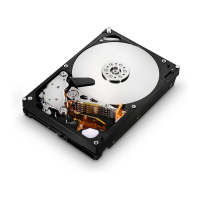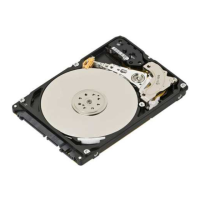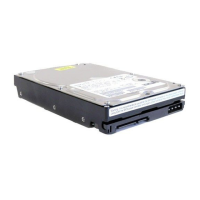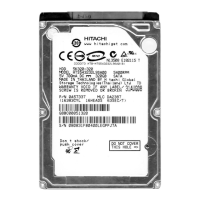HITACHI Deskstar & CinemaStar 7K1000.B & Deskstar E7K1000 Hard Disk Drive specification
35
6.6 Vibration and shock
All vibration and shock measurements recorded in this section are made with a drive that has no mounting
attachments for the systems. The input power for the measurements is applied to the normal drive mounting
points.
6.6.1 Operating vibration
6.6.1.1 Random vibration (Linear)
The test is 30 minutes of random vibration using the power spectral density (PSD) levels shown below in each of
three mutually perpendicular axes. The disk drive will operate without non-recoverable errors when subjected to
the above random vibration levels.
Table 23 Random vibration PSD profile break points (operating)
The overall RMS (root mean square) level is 0.67 G.
6.6.1.2 Swept sine vibration (Linear)
The drive will meet the criteria shown below while operating in the specified conditions:
No errors occur with 0.5 G 0 to peak, 5 to 300 to 5 Hz sine wave, 0.5 oct/min sweep rate with 3-minute
dwells at two major resonances
No data loss occurs with 1 G 0 to peak, 5 to 300 to 5 Hz sine wave, 0.5 oct/min sweep rate with 3-minute
dwells at two major resonances
6.6.1.3 Random vibration (Rotational) – Only for Deskstar E7K1000
The drive will meet the criteria shown below while operating in the specified conditions:
Less than 20% Performance degradation for Random Write/Read/Verify @12.5Rad/sec^2(’10-300Hz
Flat)
6.6.2 Nonoperating vibration
The drive does not sustain permanent damage or loss of previously recorded data after being subjected to the
environment described below
6.6.2.1 Random vibration
The test consists of a random vibration applied for each of three mutually perpendicular axes with the time
duration of 10 minutes per axis. The PSD levels for the test simulate the shipping and relocation environment
shown below. The overall RMS (Root Mean Square) level of vibration is 1.04 G.

